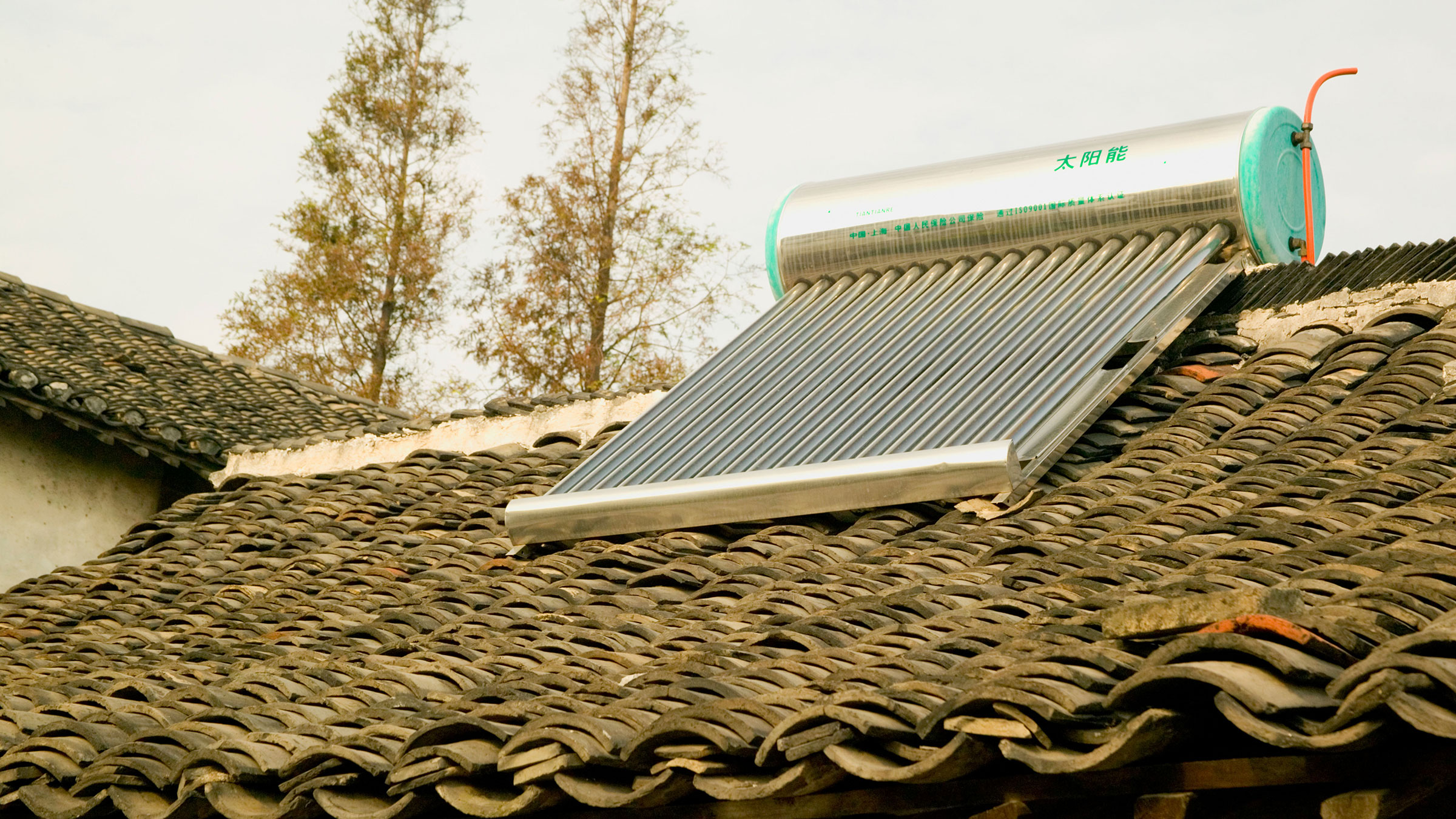Climate impact
In 2013, China had a massive solar collector capacity of 262 GWth, equivalent to 70% of global total. Solar water heating in China has reduced emissions by 76 Mt, compared with using default, mainly fossil fuel technologies.
Scaling up the Chinese programme to countries with similar solar conditions would reduce annual emissions by 136 Mt in 2030, compared with business-as-usual policies. The greatest potential is found in the rest of Asia (74 Mt) and in Africa (48 Mt).

Success factors
Solar collectors for water heating have been deployed in China on a remarkable scale. In 2013 alone, a total capacity of 45 GWth was installed, equivalent to 80% of global installations in that year.
Rapid deployment is driven by the low cost of solar thermal systems (STS). Another key driver has been a mandate to install solar water heating in urban areas in more than 11 provinces and 23 cities. From 2014, all new buildings have to install STS in areas where sunshine hours are higher than 2,200 annually.
An additional factor driving uptake is a subsidy scheme for rural inhabitants, equivalent to 13% of capital costs. China has a national goal to install 300 million m2, or 328 GWth, of STS by 2020. Finally, the government provides financial support for “New Energy Cities” demonstration projects.
Costs
Solar water heating saves money over time as the “fuel” – sunlight – is available for free. The cost of reducing emissions using this solution over time is therefore negative, estimated at –31 to –73 $/tCO2e. Scaling up the solution would result in total savings of $4-10 billion per year.

Co-benefits
By replacing fossil fuels, solar collectors improve air quality, especially in dense urban areas. This has a positive impact both on people’s health and the environment.
The installation of solar heaters is relatively labour- intensive, thus creating local jobs. The solar water heating industry employs around 600,000 people in China. Given its low cost and ease of installation, solar water heating may also contribute to improved energy access in remote and rural areas.
Barriers and drivers
- Solar heating deployment has been hampered by poor quality control. Establishing performance standards, and monitoring to ensure that these are implemented, may help increase adoption.
- Upfront costs of $200 are higher than for electric ($50) and gas heaters ($100). While low operational costs deliver a rapid return on investment, high capital costs can still be a barrier. The Chinese government has introduced subsidies to help poorer families cover these initial costs.
- No specific infrastructure is required and production lines are relatively easy to set up. However, support and education to enable better installation and after- sales service is needed.
Public acceptance is high in China, where solar heating is considered a sign of modernity, similar to cell phones and air conditioning. In other countries residents may be reluctant to alter the external appearance of their homes. - Solar heating can be deployed almost anywhere. However, investment costs are lower and output higher in countries with more solar radiation.
















RELATED SOLUTIONS